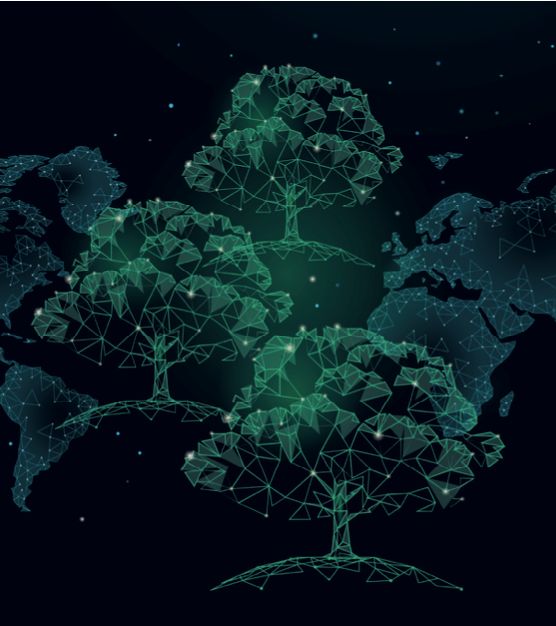It is a communications challenge like no other. Storytelling skills will be essential for businesses to explain how their sustainability initiatives impact the natural world.
Public awareness of climate change is undoubtedly increasing. People are becoming more concerned too, as reports from the likes of Porter Novelli, Kantar and Savanta reveal. It is also one of the top three concerns for employees, as Deloitte’s 2023 Gen Z and Millennial Survey highlighted. That makes sustainability one of the biggest conversations on the business agenda today.
However, we find ourselves facing a significant communications challenge. As green claims have increased, we have seen the rise of greenwashing – leading to new regulations and tighter guidelines. Negative headlines are driving overwhelm, social media is spreading misinformation and sustainability terms – well, aren’t they for the scientists and sustainability team? Sir David Attenborough stated on his very first Instagram post in 2020 that, “Saving our planet is now a communications challenge. We know what to do, we just need the will.”
Marketing is well placed to use its skillsets in communication and storytelling to raise awareness, educate and motivate in ways that change mindsets and shape new behaviors – the outcome that is ultimately required to create sustainable markets and a more sustainable future.
To achieve this, three things should be taken into consideration.
1. It has to start with collaboration
While marketing strategies traditionally ladder up and support the organization’s commercial objectives around revenue and growth, there is also a need for them to align with and support the organization’s sustainability objectives. Marketing teams and sustainability teams need to work together if sustainable marketing strategies are to be effective. It is imperative for marketers to be aware of organizational commitments to sustainability and what sits within that agenda, whether it is decarbonization targets, biodiversity and regeneration projects, or activities around circularity and waste reduction.
Marketing also needs to commit to staying up to date with the changing operating environment, evolving regulations, and the already-shifting macro-level behaviors evident across society. These areas can inform and shape communication plans that go beyond just products and services. Understanding them can allow marketers to unlock the ‘why’ in your future stories, bringing them to life and making them more relatable
and engaging.
2. Avoid talking about everything and nothing
Sustainability is a broad and complex subject – and that can lead to content and communications becoming generic and repetitive. When building sustainable marketing strategies, it is important that you don’t try to cover everything at the same time: this can lead to overwhelm and your audience switching off.
In many ways, sustainability and why your organization exists – its purpose – should go hand in hand. And just as we need to address the balance between people, planet and profit, the question of how we balance our communications and narrative is equally important. Ask yourself: are you broadcasting or sharing? Are you talking about everything and nothing? Where does the focus need to be to allow you to meet both your commercial and sustainability objectives? Are you considering both internal and external communications?
3. Words and language are everything
While awareness and concern about sustainability and business’s impact on the natural world is growing amongst key stakeholders, understanding remains low. The use of sustainability terms such as net zero, carbon neutral, circular economy or nature-positive mean very little to most people – which leaves them unable to relate to the discussion. A 2021 survey conducted by dairy brand Yeo Valley Organic in the UK highlighted that a majority of people find that sustainability-related jargon makes it harder to determine what is being communicated – and that prevents people from engaging, even when they want to.
Equally damaging is the broadcasting of bold statements and pledges that give the impression that business will solve sustainability problems for us when the challenge is far greater. Words and language can either slow down progress or speed it up, so it’s vital that marketing connects the dots carefully, making sustainability accessible and relatable to people and their everyday lives.
For example, instead of broadcasting one-way communications about circularity, marketers can look at starting conversations around their new ‘return and refill’ initiative in a way that prioritizes the benefits for customers, based on the things they care about – like ease of use, the cost savings, and the fact that by engaging in the initiative, they can become part of the solution. The use of inclusive, action-orientated language can be both educational and motivational.
Wrapping a service around your products is a great way to keep the conversation going, and talking about progress through collaboration can lead to more-engaged communities and increased customer loyalty – which supports both commercial and sustainability objectives.
Speak with care
When it comes to talking about sustainability and business’s impact on the natural world, balance is key. Educating stakeholders about the challenges
is one thing, but the need to talk about solutions and what we can do about them is equally – if not more – important.
As marketing grows its own awareness and understanding, it needs to be able to meet its audiences where they are. It is essential to use words and language that go beyond transactional relationships based purely on selling products, to develop an approach that looks at the long term and drives ongoing positive impact.
In the drive for business to become more sustainable, marketing can – and must – be a force for good. Sometimes the most effective way to communicate about sustainability is to avoid using the ‘s’-word altogether.



